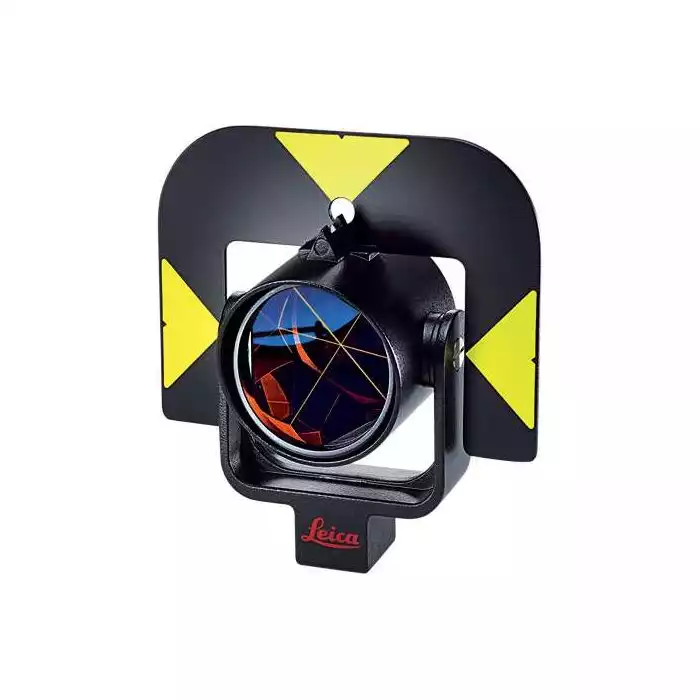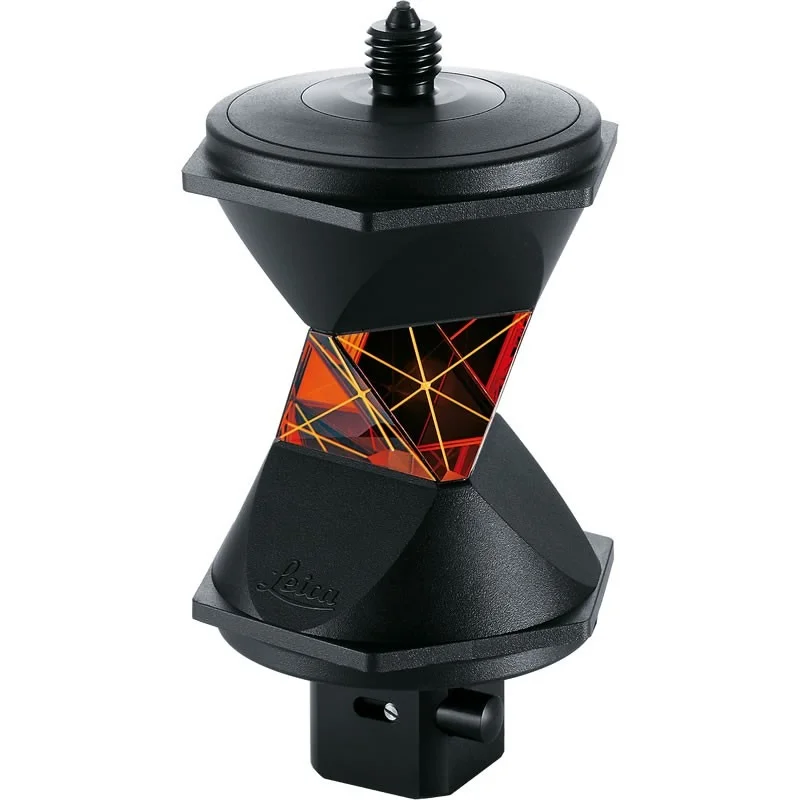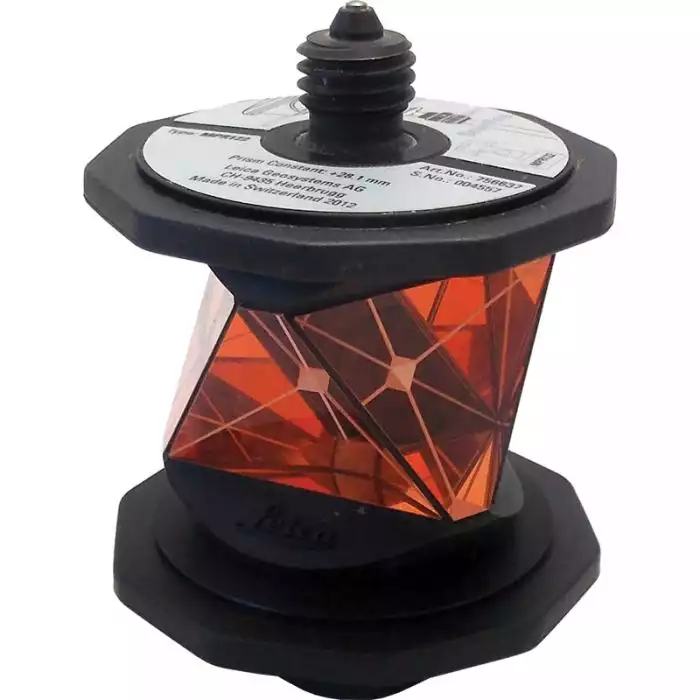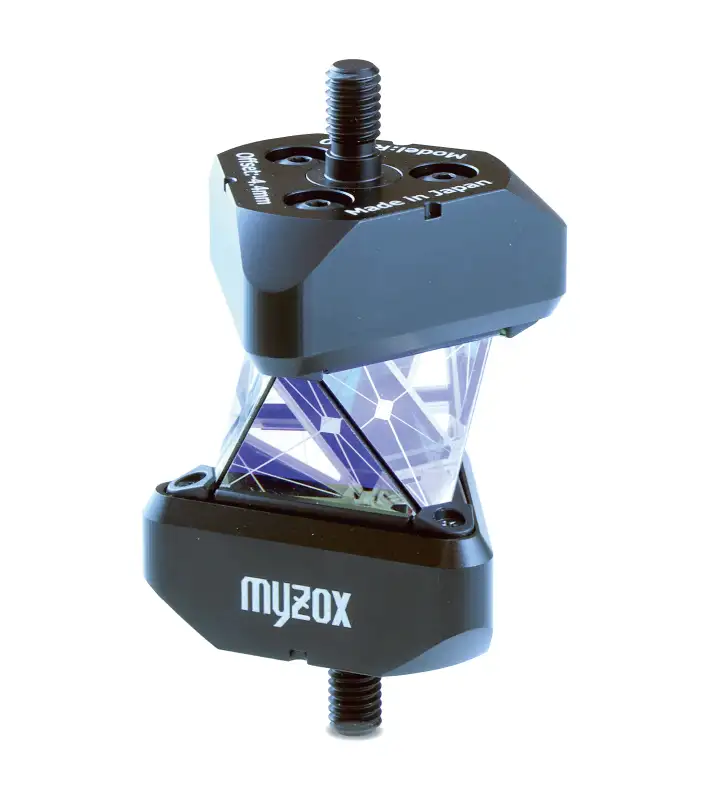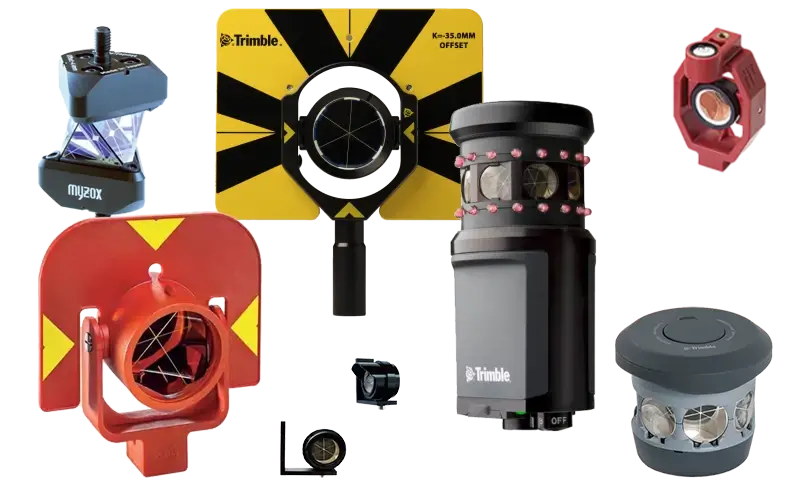
What are survey prisms?
Survey prisms are specially designed retro-reflectors or, more precisely a corner reflectors, that are used to reflect the signal from an Electronic Distance Measurement device such as Total Stations. In surveying, prisms assemblies are also commonly named “targets“.
Prisms reflect the infrared beam emitted by a Total Station back to its source, allowing it to calculate precise distance and angles. A prism in surveying applications is built in such a way that it reduces the scatter of an EDM signal, allowing for more accurate and longer range electronic measurements.
Types of survey prisms
There is a large variety of optical reflectors (prisms) used in surveying. Usually, these are categorised by their field of application or usable range. Most survey prisms will fall under the following categories:
- Full size prisms – These are generally used in applications that require high accuracy and large distances. Such applications include: control network determinations, traversing and precision monitoring.
- Mini prisms – Most of the mini prisms on the market (with a few exceptions) are used for a variety of applications where distance measured are in the short to mid range. They are usually cheap and reliable and can offer good accuracy if used in the right way.
- 360° prisms – When visibility is required from any direction, then 360° are the way to go. These offer a full 360 degrees of horizontal targetable angle and are ideal when moving a lot for detail survey or when multiple instruments need to target the same point.
- Active Targets (prisms) – These are a combination of one or multiple reflectors (prisms) and an electronic device that guides the instrument towards and locks it on the target, even when there is no returning EDM signal.
Most commonly used prisms in surveying
Below is a list of commonly used prisms in surveying. Click on each item to see the details of the prism such as the survey prism constant, prism height offset and centring accuracy.

